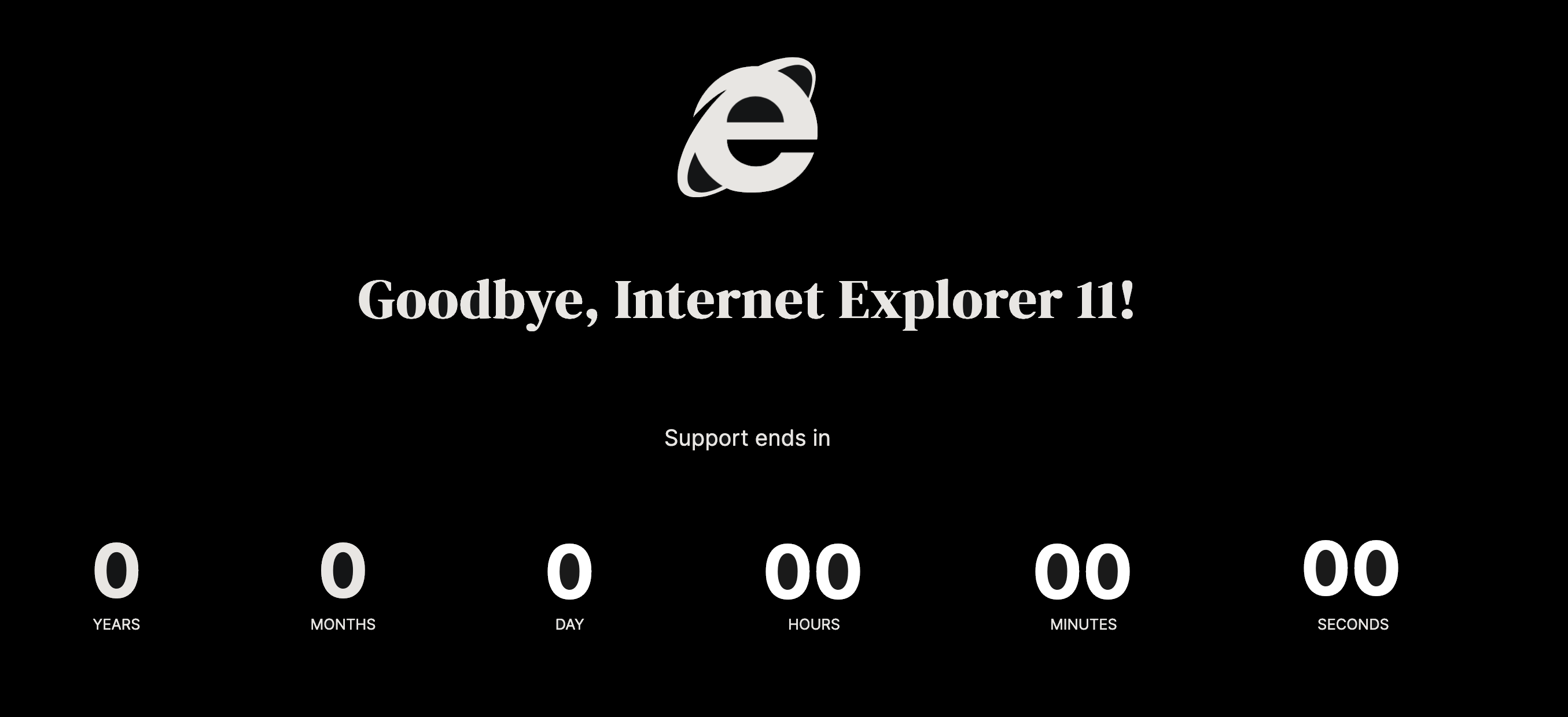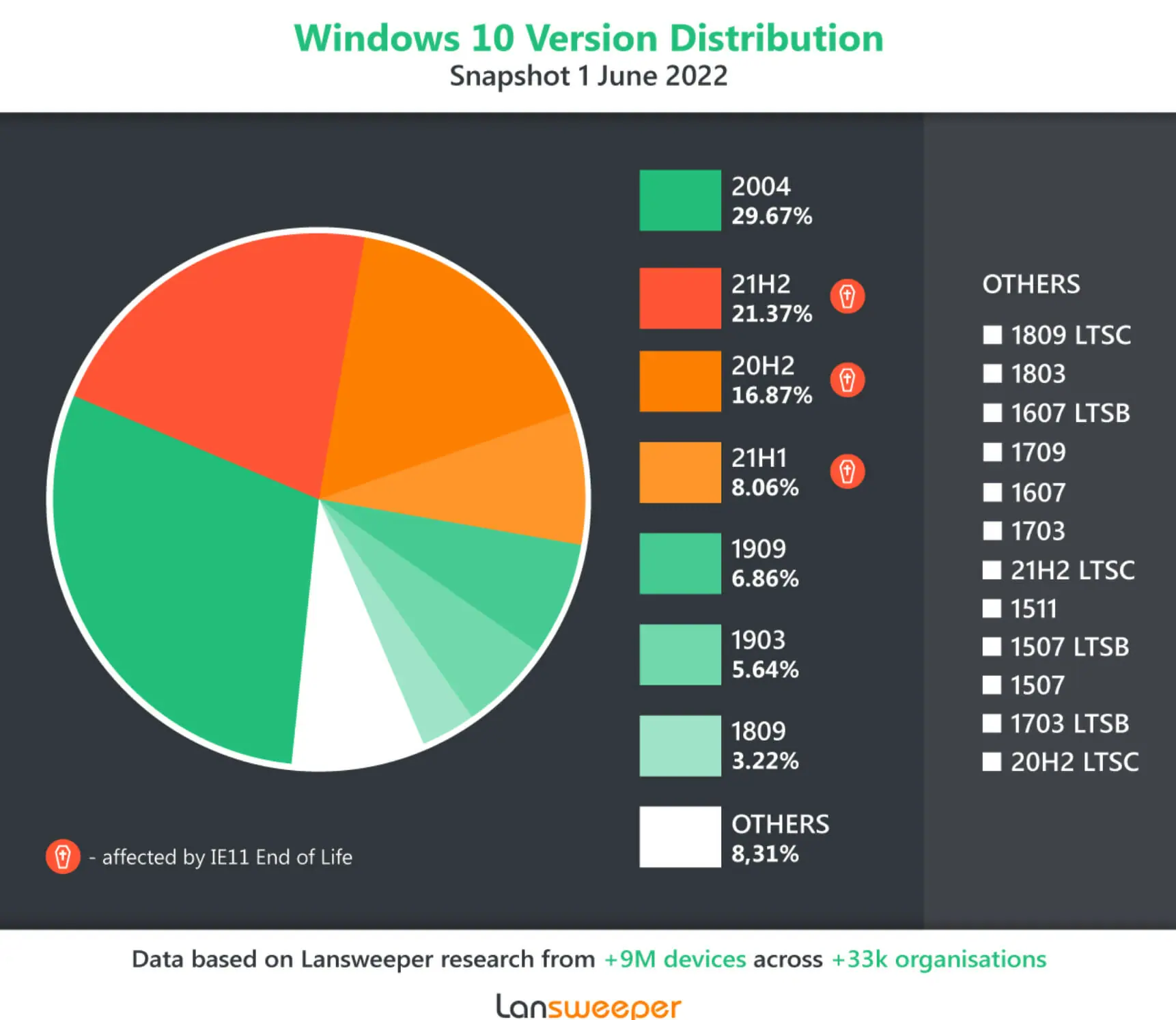A year ago, Microsoft announced that IE would be officially retired today, and now the clock is ticking towards the last second, and the IE era has officially come to an end.
Goodbye, Internet Explorer!

We have selected the noteworthy historical events since the birth of IE. We hope it will give you a glimpse of memories.
- On August 16, 1995, the first version of Internet Explorer (known as Internet Explorer 1) debuted as a software package for Windows 95.
- In August 1996, IE 3.0 was released for free, and it was bundled with another OEM version of Windows 95
- In September 1997, Microsoft released IE version 4.0, which was designed to run on Windows 95, Windows 98 and Windows NT and was available for free download from the Internet
- In 1998, IE’s market share (45%) surpassed that of Netscape Navigator (57%), the dominant browser at the time, officially starting the “Browser Wars”.
- In May 1998, the U.S. Department of Justice sued Microsoft for obstructing competition by bundling IE into the system.
- In March 1999, IE 5.0 was released with Windows 98, and version 5.0 was the last version released for Windows 3.1x or Windows NT 3.x
- August 27, 2001, IE 6 was released, and this version became the most widely used web browser
- In 2002-2003, IE gained an overwhelming market share, peaking at 94.43%.
- In May 2003, IE will no longer be released separately from the operating system (IE 6 was the last standalone version)
- From 2006 to 2009, IE’s market share slowly declined and the policy change to only release new versions with the Windows operating system was reversed with the implementation of the IE 7 program
- In September 2010, IE’s market share fell below 50%.
- In May 2012, Google Chrome overtook IE as the world’s most used browser
- October 17, 2013, IE 11 was released, the last major version of IE 11
- On March 17, 2015, Microsoft announced that IE is no longer the default browser for Windows 10 and is gradually abandoning the brand
- On April 19, 2015, Microsoft released Microsoft Edge, a new browser, which officially replaced IE as the default browser.
- On May 20, 2021, Microsoft announced that it will completely end support for IE on June 15, 2022
- In October 2021, Microsoft released Windows 11 and IE was removed from the Windows operating system.
- June 15, 2022, EOL
For a few months after retirement, IE desktop applications will be redirected to the Microsoft Edge browser (users will automatically jump to Edge when launching IE11), and eventually IE will be permanently disabled by Microsoft through a subsequent Windows update. it is important to note that users should not completely uninstall IE, as the IE mode of the Edge browser relies on IE 11 to function.
IE will no longer be available for Windows 10 client SKU (20H2 and later) and Windows 10 IoT (20H2 and later) after it is retired. According to June statistics from a research firm, about 46 percent of Windows 10 devices are likely to be affected by the retirement of IE.

Not affected by this retirement of IE include.
- IE mode in Microsoft Edge browser
- Internet Explorer 11 desktop applications.
- Windows 7 ESU (with Extended Security Update)
- Windows 8.1
- Windows Server LTSC (all editions)
- Windows Server 2022
- Windows 10 IoT LTSC (all editions)
- Windows 10 client LTSC (all editions)
Users who still need to use IE in the future can switch to IE mode in Edge, in addition to using those systems not affected above. Microsoft’s support for IE mode in Edge browser will be available until at least 2029, and this support will need to be consistent with the lifecycle of current and future Windows systems, so if support for a particular version of Windows ends before 2029, then support for IE mode for that version will also end.
As of May this year, China tops the list of countries/regions with the highest use of IE, far ahead of the Philippines, Iran, Seychelles and the US.

A very large number of websites and services have already stopped supporting IE, including Microsoft’s own Microsoft 365 and Microsoft Teams, GitHub and LinkedIn.

Microsoft introduced the first version of IE with Windows 95 in 1995; IE 11, the last version of IE, was introduced with Windows 8.1 in October 2013; and now Edge has replaced IE as the default browser on Windows.